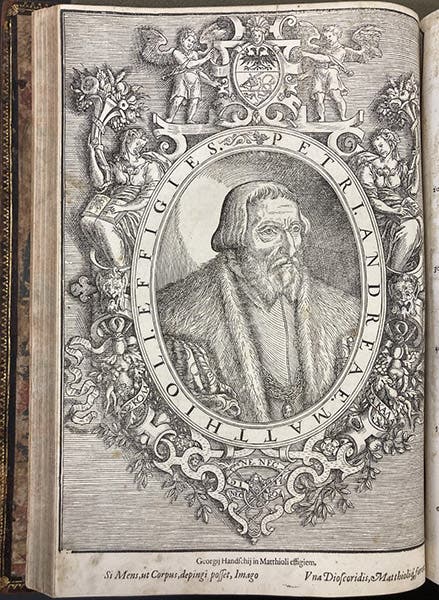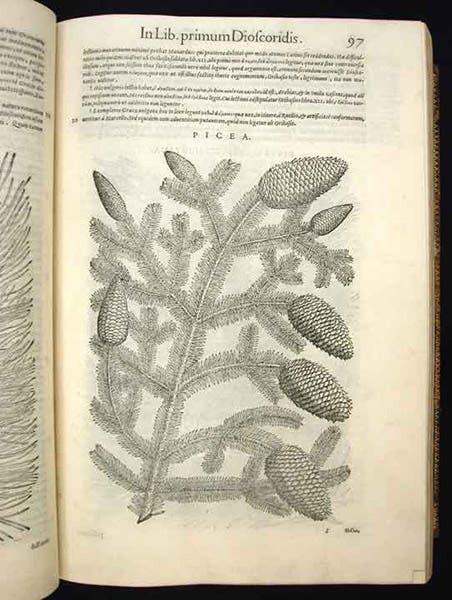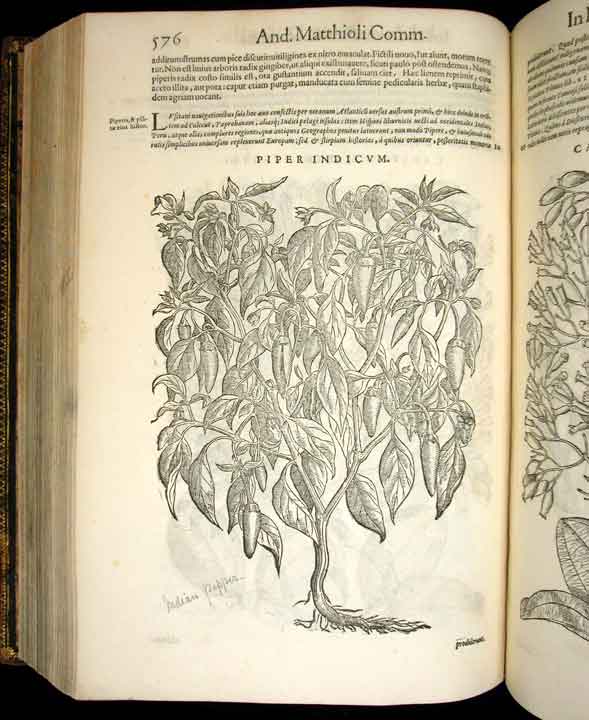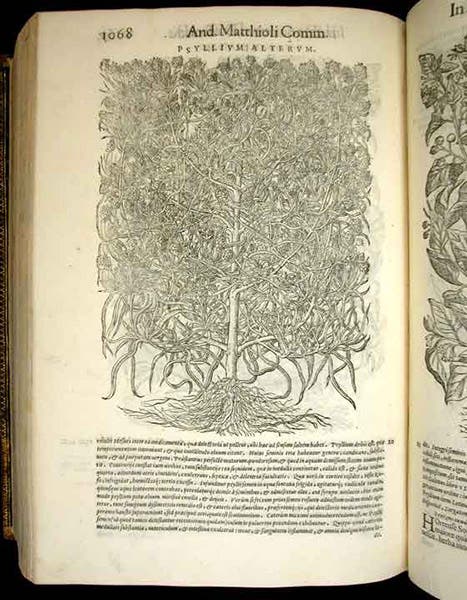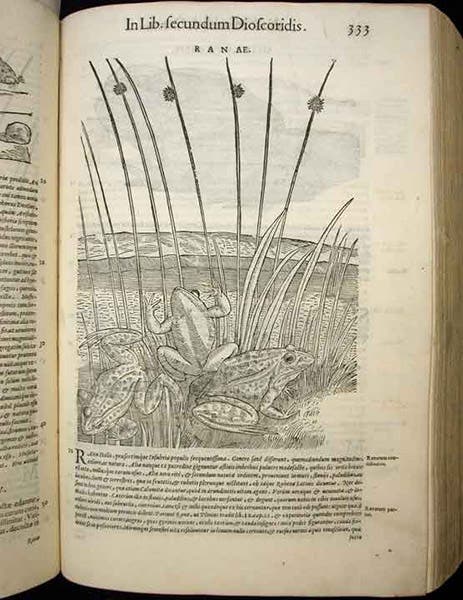Scientist of the Day - Pietro Andrea Mattioli
Pietro Andrea Mattioli, a Renaissance physician and botanist, was born Mar. 23, 1501. In 1544, Mattioli published a translation with commentary of an ancient text, De materia medica, by the Greek physician Dioscorides. This was basically a book of medical botany, describing about 500 plants and indicating their use for the physician. By 1544, Dioscorides was not out of fashion, but Renaissance botany, with the publication of books with illustrations drawn from life, by Otto Brunfels and Leonhart Fuchs, was taking a new direction, with more emphasis on modern observations than classical learning. So it was and is surprising that Mattioli’s commentary on Dioscorides, published originally without illustrations, became an improbable publishing success, outselling every other botanical handbook for the next forty years, and appearing in Latin, Italian, German, even in Czech. Clearly physicians still wanted to know what Dioscorides had to say about medicinal plants, and the fact that Mattioli went to some lengths in his commentary to identify the plants discussed by Dioscorides must have played a large role in the success of his book.
The beautiful woodcuts in the herbals of Brunfels and Fuchs probably put some pressure on the publishers to illustrate Mattioli’s commentary, for the Venetian edition of 1554 introduced over 500 woodcuts, which added to the book’s appeal. In 1562, a publisher in Prague commissioned new and larger woodblocks from Giorgio Liberale and Wolfgang Meyerpeck. These were used again for another Prague edition in 1563, and then for the most sumptuous edition yet, that published in Venice in 1565. This is the edition we have in our History of Science Collection. The woodcuts in this edition will be the focus of our attention for the rest of this post.
Quite simply, these are the most remarkable botanical woodcuts ever printed, in their intricacy of design and execution. I begin with a fairly uncomplicated design, a lily-of-the-valley (first image), so as to not to spoil the surprise. This cut is simple and attractive, and comparable to the clean woodcuts in Brunfels and Fuchs. And the woodcut of the spruce cones (third and fourth images, above) does not immediately strike the viewer as especially overdrawn, although the detail does reveal the fine woodcutting techniques employed by Liberale and Meyerpeck.
But consider now the Indian pepper plant (fifth image, above). It is striking, and a little unsettling, because the plant completely fills the woodblock, in a very unnatural way. It looks as if it were raised in a small greenhouse and allowed to grow into every corner. Hundreds of the woodcuts are like this, and as you leaf through the pages, an entire garden of perfectly rectangular plants passes in review.
The quintessential woodcut in this entire 1600-page work, in my opinion, is that depicting the psyllium plant (sixth and seventh images, above). It is almost unbelievable, with its snarl of intertwined stems. When you recall that, on a woodblock, to represent a single crossing of one stem over another, the woodcutter needs to make 16 separate cuts with his knife, you realize that this is a tour-de-force of a woodblock. How many total cuts the psyllium required I cannot even fathom. And it is just one of 500 woodblocks in the book. They are simply amazing! However, whether the woodcuts contributed to the advance of botanical knowledge is problematic.
One last feature of Mattioli’s commentary on Dioscorides that I would like to point out is that it includes a section on animals. Dioscorides had not relied entirely on plants for his pharmacopeia; many animals, such as beavers, elephants, goats, and civets, had medicants to contribute to the physician. Illustrations of some of these animals were included in most of the early Renaissance herbals, such as the Gart der Gesundheit (1485), which was based on Dioscorides, but with the mild botanical revolution launched by Brunfels’ Herbarum in 1530, animals disappeared from herbals. It is nice to have them reappear in the later Mattioli editions, especially since the artist preferred to portray his animals in their natural habitats, such as the frogs among the reeds shown here (eighth image, above), which was not at all customary in the contemporary zoological works such as that of Conrad Gessner. Perhaps we can pursue this topic on another occasion.
The portrait we show of Mattioli (second image) is the woodcut included as a frontispiece in our 1565 edition. We have two other portraits of Mattioli, one in a portrait collection by Jean-Jacques Boissard (1597-99), and another in a later collection by Isaac Bullart (1682). There is also an oil portrait of a younger Mattioli accessible online, in the Palazzo Rosso of the Musei di Strada Nuova in Genoa.
Dr. William B. Ashworth, Jr., Consultant for the History of Science, Linda Hall Library and Associate Professor emeritus, Department of History, University of Missouri-Kansas City. Comments or corrections are welcome; please direct to ashworthw@umkc.edu.


